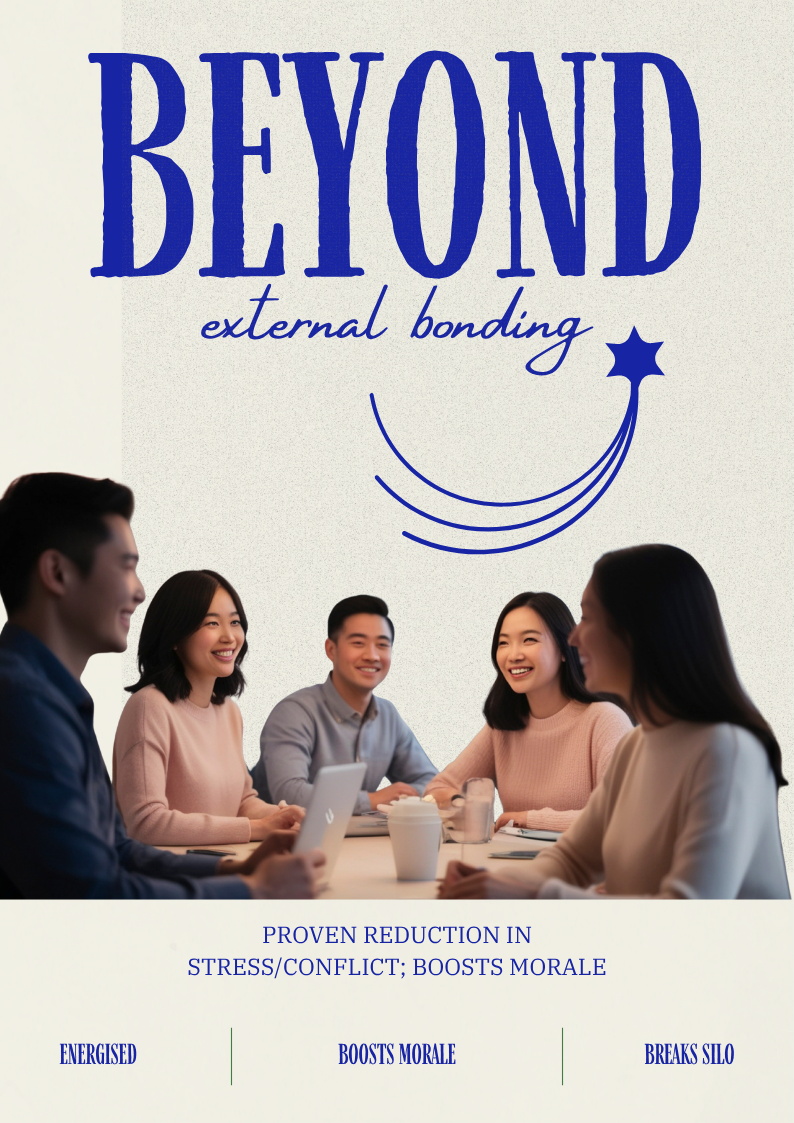Beyond Team Building: Corporate Art Therapy vs. Traditional Training—Which Works Best?
- Lee Ling Tan
- Oct 31
- 2 min read
If you’re leading HR, people development, or innovation, you’ve probably asked:“Does our current training deliver real change, or just a feel-good day off?” With employee burnout rising and teams craving more creativity, it’s time to look beyond standard workshops. Art therapy is emerging as a science-backed, business-focused alternative. But does it truly outperform the classic team-building playbook? This post compares both side by side - so you can decide with the facts.

The Quick Comparison
Traditional Training | Corporate Art Therapy | |
Focus | Processes, fixed outcomes, knowledge transfer | Mindsets, creative problem-solving, team renewal |
Delivery | Slides, lectures, guided activities | Hands-on, visual, experiential, multi-sensory |
Emotional Impact | Low—rational and structured | High—engages emotions and intrinsic motivation |
Collaboration Gains | Some improvement—can reinforce silos | Breaks silos—builds psychological safety and trust |
Creativity | Teaches frameworks, limited spontaneous idea generation | Sparks new approaches, divergent thinking, risk-taking |
Wellbeing/Burnout | Low direct impact | Proven reduction in stress/conflict; boosts morale |
Duration of Impact | Often fades in days/weeks | Results last; triggers lasting mindset shifts |
Typical Feedback | “Useful but routine, hard to apply” | “Energising, practical, changed the way I think” |

Why the Difference?
Traditional training is great for onboarding or compliance: it delivers the what and how in a safe, familiar format. But these methods often fall short when you need teams to break fixed thinking, innovate, or bounce back from fatigue.
Corporate art therapy flips the script:
It targets both hemispheres of the brain—creative and analytical—making change visible and visceral.
Teams solve real business issues using drawing, mapping, and other art modalities, surfacing new solutions you can’t get from bullet points or brainstorming.
The process builds shared trust, psychological safety, and emotional resilience—the “soil” where breakthrough performance and innovation grow.
What Does the Research Say?
In controlled studies, arts-based interventions delivered greater and longer-lasting improvements in team alignment, leadership agility, and employee wellbeing than traditional courses.
Participants report up to 24–30% higher operational efficiency and a 17% reduction in burnout-related absenteeism after art therapy sessions.
Almost all managers surveyed would recommend art-based programs to their peers, citing deeper engagement and visible business results.
When Should You Try Art Therapy?
Choose art therapy programs if you need:
A culture reboot—get teams unstuck, creative, and more collaborative
Leaders with emotional intelligence, who handle change and feedback better
Sustainable impacts on morale and engagement—not just a motivational “high”
Business results that go beyond “checkbox” compliance and foster real innovation
Pro Tips for Skeptical HR & L&D Pros
Pilot with a goal: run a session tied to a pressing team challenge or strategic initiative.
Get feedback—use before/after metrics, and gather honest testimonials.
Start with leadership buy-in. The most powerful change happens when managers join in with their teams.
Conclusion: If you’re tired of “just another training,” try art therapy as your next move. It delivers business results you can see, feel, and measure—long after the session ends.
Ready to learn more? Contact us for a sample session or a tailored proposal—let’s discover what your teams are truly capable of.







Comments